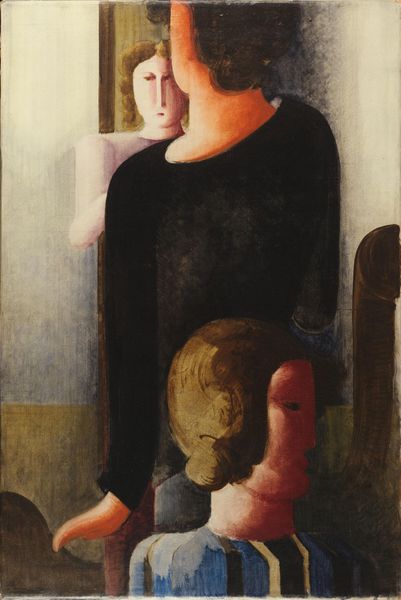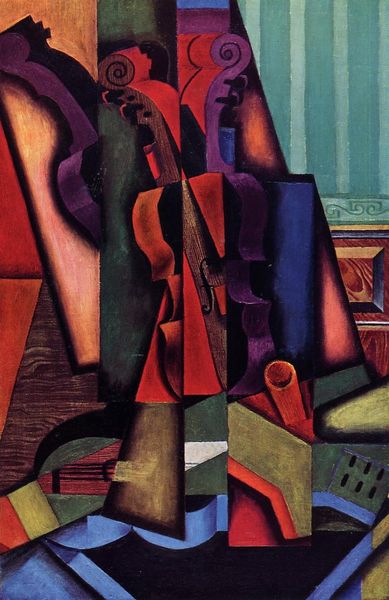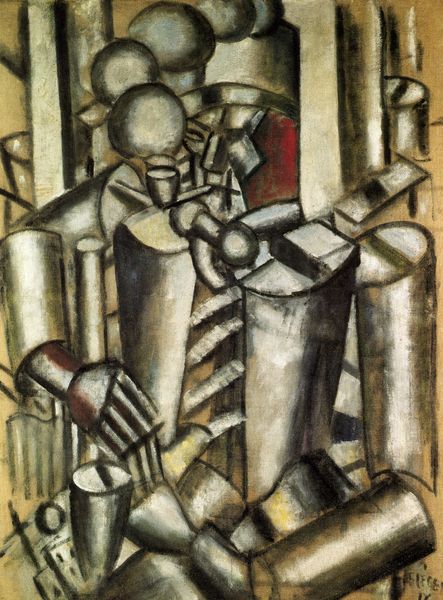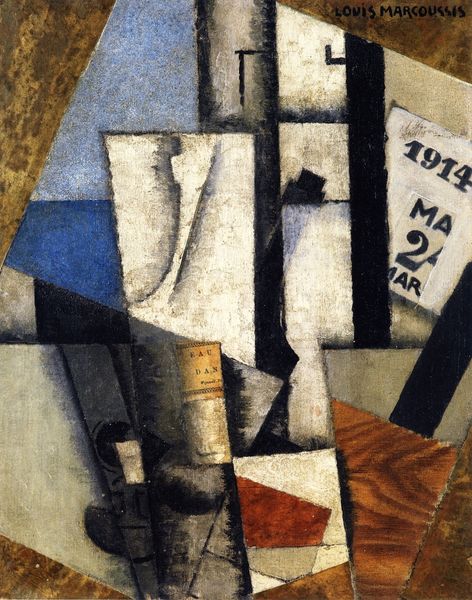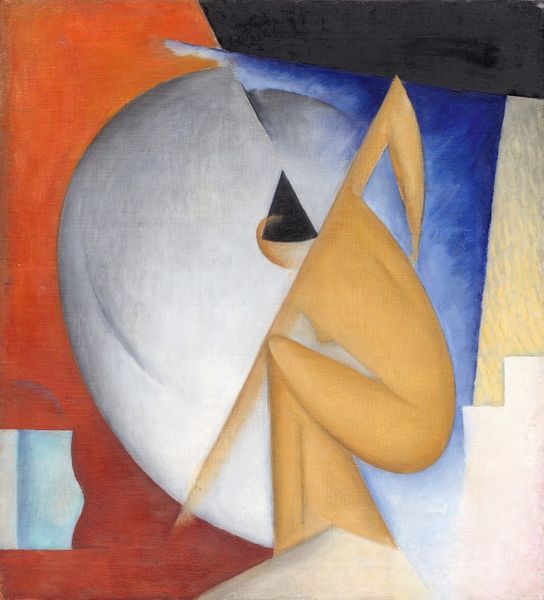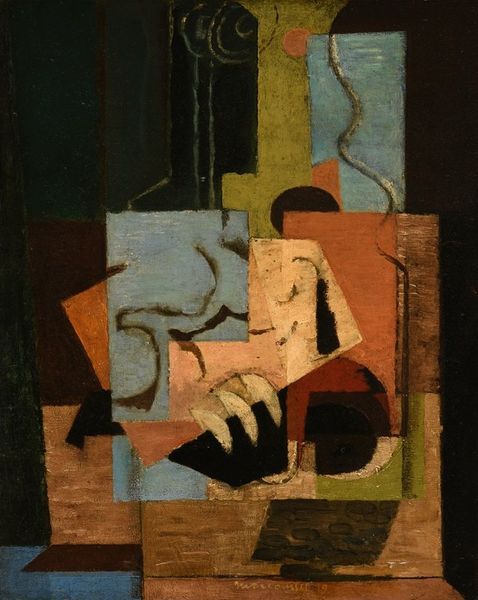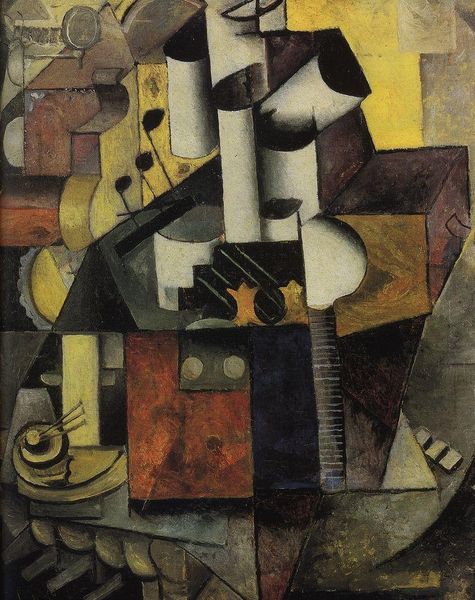
tempera, painting
#
cubism
#
tempera
#
painting
#
figuration
#
russian-avant-garde
#
genre-painting
#
modernism
Copyright: Public domain
Editor: This is Kazimir Malevich’s "Reaper," painted around 1912 using tempera. It's quite striking; there's a heaviness to the figure, this sense of labor. How do you interpret this work? Curator: It’s interesting you use the word 'heaviness.’ For me, it evokes a sort of… earthbound energy, wouldn't you agree? It's like Malevich is showing us not just the act of reaping but the profound connection between the figure and the land. It's hard work, no doubt, but also intensely human. Editor: I see what you mean about the earthbound energy, it almost seems as though the figure is sinking. Why do you think he chose such a humble subject? Curator: Malevich was deeply engaged with the Russian peasantry and folk traditions at this point. But there’s also the creeping influence of Cubism… fragmented forms, simplified shapes…he is transforming reality. You might also want to read it against a wider backdrop: what was going on politically at the time? Editor: It’s starting to dawn on me how radical this seemingly simple scene really is! Thanks. Curator: Exactly! It is like a visual poem of rural life and a quiet meditation on revolution and what it can accomplish.. Now what do YOU see, knowing what we’ve just said?
Comments
No comments
Be the first to comment and join the conversation on the ultimate creative platform.




